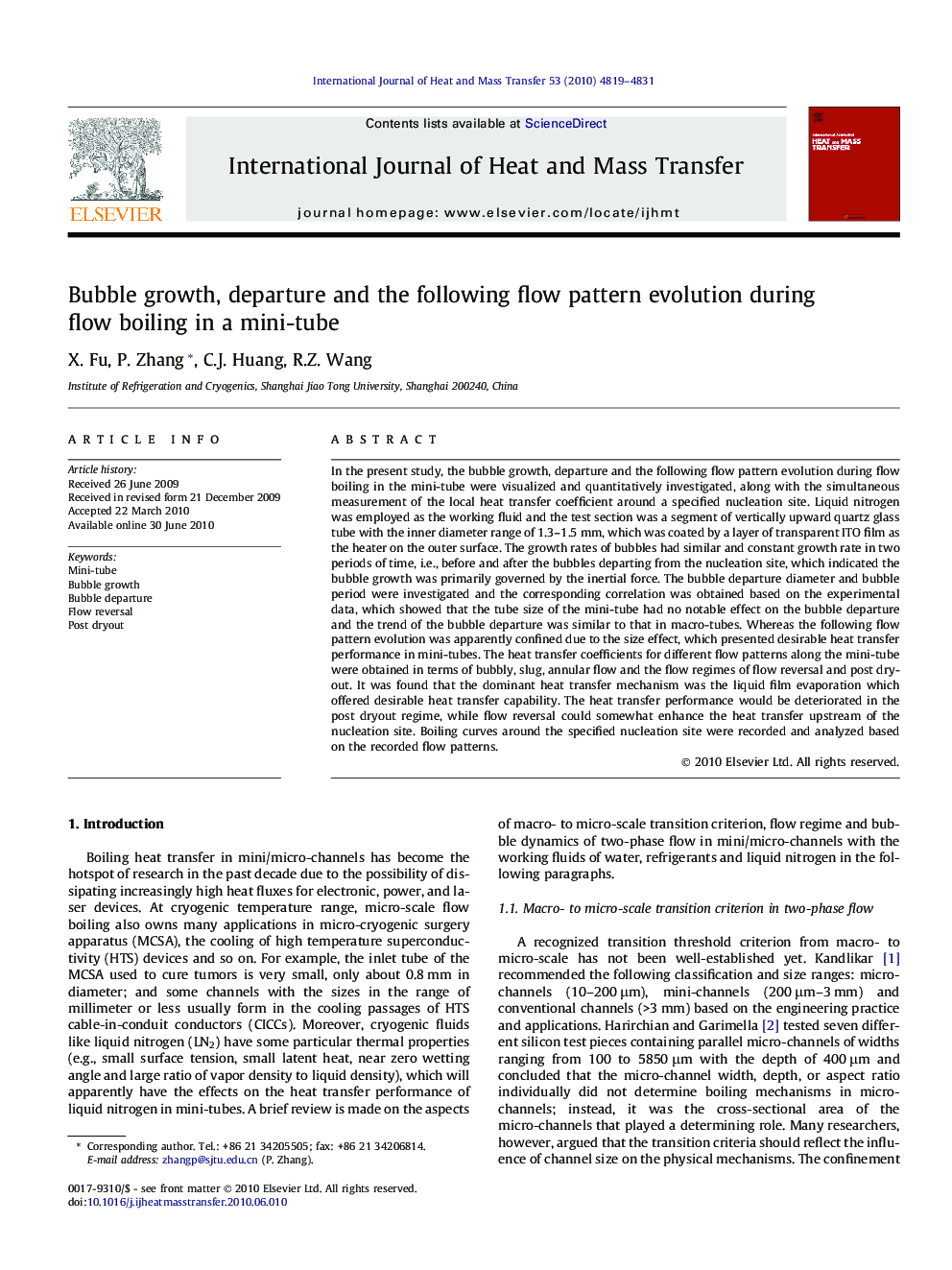| کد مقاله | کد نشریه | سال انتشار | مقاله انگلیسی | نسخه تمام متن |
|---|---|---|---|---|
| 660487 | 1458116 | 2010 | 13 صفحه PDF | دانلود رایگان |

In the present study, the bubble growth, departure and the following flow pattern evolution during flow boiling in the mini-tube were visualized and quantitatively investigated, along with the simultaneous measurement of the local heat transfer coefficient around a specified nucleation site. Liquid nitrogen was employed as the working fluid and the test section was a segment of vertically upward quartz glass tube with the inner diameter range of 1.3–1.5 mm, which was coated by a layer of transparent ITO film as the heater on the outer surface. The growth rates of bubbles had similar and constant growth rate in two periods of time, i.e., before and after the bubbles departing from the nucleation site, which indicated the bubble growth was primarily governed by the inertial force. The bubble departure diameter and bubble period were investigated and the corresponding correlation was obtained based on the experimental data, which showed that the tube size of the mini-tube had no notable effect on the bubble departure and the trend of the bubble departure was similar to that in macro-tubes. Whereas the following flow pattern evolution was apparently confined due to the size effect, which presented desirable heat transfer performance in mini-tubes. The heat transfer coefficients for different flow patterns along the mini-tube were obtained in terms of bubbly, slug, annular flow and the flow regimes of flow reversal and post dryout. It was found that the dominant heat transfer mechanism was the liquid film evaporation which offered desirable heat transfer capability. The heat transfer performance would be deteriorated in the post dryout regime, while flow reversal could somewhat enhance the heat transfer upstream of the nucleation site. Boiling curves around the specified nucleation site were recorded and analyzed based on the recorded flow patterns.
Journal: International Journal of Heat and Mass Transfer - Volume 53, Issues 21–22, October 2010, Pages 4819–4831